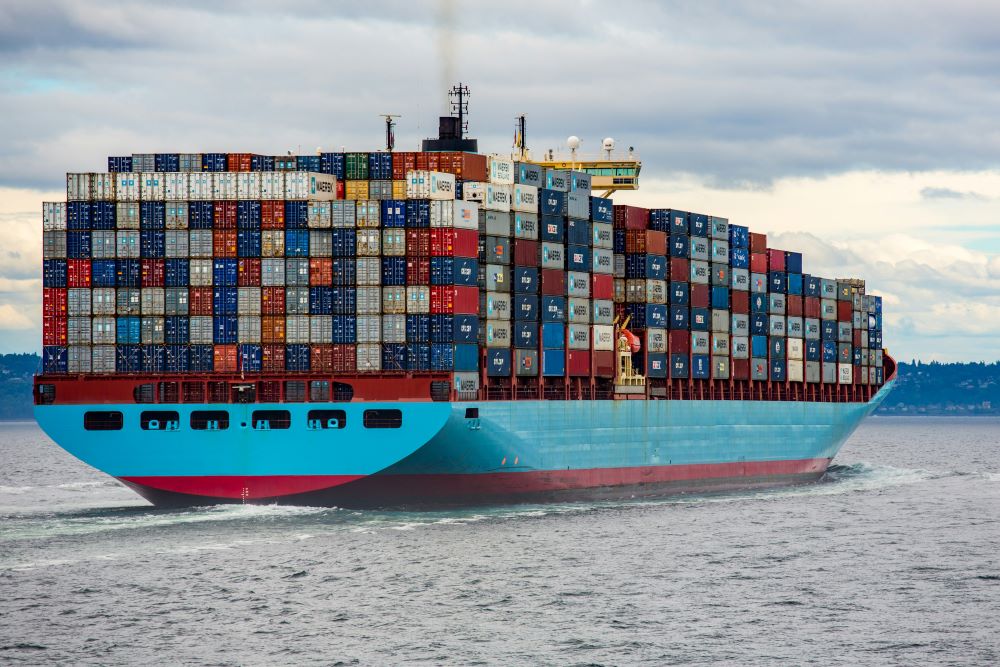“NetRom developers add a great deal of value thanks to the high quality of the code they write,” says de Gouw. “Of course, there’s also a cost advantage. In the Netherlands, there are hardly any good developers left and salaries are very high; in Romania, costs are lower.”
But that price advantage should not come at the expense of quality, De Gouw adds: “NetRom developers are highly educated, but also young. Therefore, they receive internal training from the start. Moreover, Frontliners has deliberately opted for a dedicated team. This provides plenty of room for building domain knowledge and stability. The NetRom developers, in turn, like to stay involved in the project because it is a very advanced and challenging solution they are working on – churn among employees is low.

A logistics puzzle that demands advanced software
As they say in the transport sector, ‘standing still costs money’. For international transports across multiple continents, using multiple modes of transport – by road, rail, water, or air – is unavoidable. That means whoever can best manage this extremely complex chain has an advantage. Frontliners’ specialized software gives transport companies a head start.
A transport company’s process starts with a client order. Using different of means of transport must then be organized in the best possible way: a question of smart planning and making the best use of each transport method’s strengths, in terms of flexibility, speed, cost, and environmental performance.
Carriers are dependent on various parties throughout the supply chain, processes such as cleaning, storage, and transshipment, and factors such as pricing, availability, and weather. This process of optimization is known as ‘balancing’. Furthermore, transport companies, also need to consider various rules and regulations.
Although ‘intermodal transport’ (by road, rail, water, and/or air) is not uncommon, most transports are still by road. This is partly due to a lack of easily accessible real-time information on intermodal terminals and on the capacity of the intermodal network. What’s more, hardly any software that integrates all these chains and processes is available.
In practice, transport professionals work with a variety of discrete applications for sub-processes such as warehousing, planning people and resources, and invoicing. Anyone who knows how to make optimal use of all the possibilities intermodal transport offers – for example with the help of smart software – can gain a head start.



Origin of Frontliners
Creating a head start with proprietary software, was the starting point for founding Frontliners 25 years ago. Frontliners was set up as an Independent Software Vendor (ISV), in the form of a company separate from its former initiators’ transport firm.
In 2008, Frontliners was taken over by investor Den Hartogh Logistics from Rotterdam, which is specialized in intermodal (tank) transport of liquids, gases, and dry bulk. In 2019, a second shareholder, H&S Group from Barneveld, joined in. This company is mainly active in intermodal bulk tank transport of liquid foodstuffs such as milk or fruit juices. Frontliners remained an independent ISV, with two large international transport companies as customers.
Challenge
Both transport companies were growing fast, and becoming more and more internationally active, and therefore also increasingly multimodal. Frontliners’ software had grown along with the company over the years, but in mid-2000 it became clear that the software suite needed modernization. “Frontliners’ software was developed with considerable input from end users, managers and business analysts. Although a great deal of development work had already been done, especially in the field of multimodal transport, end user needs were changing,” explains Sebastian de Gouw, CEO of Frontliners. “Up until that point, we had been building on a core system created 25 years ago in Clarion, a fourth-generation programming language. However, this software wasn’t scalable, flexible, or object-oriented. Instead of cloud-based, it was completely run on-premises. Instability was also creeping in.” In short, it was time to develop an entirely new application.
Extensive new build
The renewal process was taken on thoroughly: a scope of three to four years, a new development approach (Scaled Agile), new technology (cloud and microservices) and a new director who was also tasked with modernizing the Frontliners organization. One of the two shareholders, H&S, had already looked to cooperate with NetRom in 2019 for the management of its own software product. When Frontliners’ software needed to be rebuilt, it was clear that NetRom would be involved as a developer.
Sebastiaan de Gouw, originally a computer scientist and with the necessary experience in various technology positions, was appointed director. “We started with a blank canvas,” says De Gouw. “That gave us, as a software supplier, the opportunity to go further. Transport-driven companies are fairly conservative and don’t think in terms of chains and journeys. The software we develop does exactly that. In addition, we want to use the latest techniques and methods, such as scaled agile based on a hybrid model, domain-driven design, cloud and the application of Al. NetRom was also expected to invest in Scaled Agile – basically, the Spotify model.”
We learn a great deal from each other. For example, NetRom learns from Frontliners’ Scaled Agile approach, and we learn a lot from NetRom about their highly efficient way of coding software. In addition, NetRom facilitates its employees down to the last detail: everything is done to ensure they can work without being disturbed. On the other hand, ample attention is paid to the ‘fun’ component. NetRom invests in well-being and involvement. For example, there are sports facilities around the NetRom campus and there is even a car wash on the company premises. NetRom developers take great pride in their cars.
SebastiaAn de Gouw, CEO of Frontliners
Finding the cutoff point
The full development team Frontliners set up together with NetRom consists of almost 110 people, divided into seven mixed teams, working in parallel with Frontliners’ new software. Almost 30 team members come from NetRom: 21 developers and 8 QA engineers.
Outsourcing also deals with the question of where to split up tasks. At the start, De Gouw decided to accommodate lead developers, architects, and product owners in the Dutch part of the teams. “I prefer to have those roles here in the office, because they are very close to the two customers, who are also the shareholders. This makes the exchange of knowledge easier and optimizes guidance. So, in order to get distribution right, we also invested in capabilities ourselves.”
Both teams work closely together in two-week sprints, using tooling such as Slack, Teams and, of course, Jira for Scrum. Hybrid working is the standard: at home, at the office, and in the Netherlands and Romania. “Four times a year, our developers spend a week on location in Romania, because working together remotely just isn’t enough,” explains De Gouw.
Advantages of NetRom

Long-term partnership
Frontliners and NetRom have been working together successfully for a while now, and that collaboration won’t be ending anytime soon. De Gouw explains: “Frontliners has a multi-year plan, which looks about ten years ahead. The current, first phase involves realization of a product that can replace the legacy solution. As a customer or client, you can adjust the balance between time, money, and scope. Ideally, you should be able to fix all three. But that’s not how software development works anymore. We mainly think in terms of an annual budget that is matched by a certain value creation. Together with our customers, we determine which features will add the most value.”
The future
Phases two and three are already in sight. Both phases make clear what NetRom developers can contribute and take away. The second phase is about integrating other parts of the chain. “Above all, this results in all kinds of new data streams. The more you know, the better you can execute your operational planning,” says De Gouw. “In the new version, end users can leave much more up to the software. If the software comes up with any questions, it will generate a task for a specialist. The software will also come up with different scenarios much faster – think of routes or timetables.”
The third phase is about AI and predictive work. This may have implications for the composition of teams, De Gouw concludes: “We may need more data specialists and fewer developers by then, but we can’t be sure. Software is never finished.” Fortunately, the composition of the teams is something that NetRom precisely adjusts when necessary.
About Frontliners
Frontliners, founded in 1995, specializes in the development of logistics software. The company in Oss employs approximately 70 people. Frontliners provides software for a wide range of transport processes, such as matching order demand and availability of transport resources based on advanced algorithms; for intermodal tank transport and depot management; for order management, planning (of resources and personnel) and invoicing; and integration software for SAP or EDI connections with applications or hubs such as Elemica, TransWide or Transporeon.

Services we provided
Looking for reliable software development services?
See how we can help.
- Anneke van der Putten
- Call: +31 (0)30 782 0111
- anneke@netrom.nl
- Ronald Bouwmeister
- Call: +31 (0)30 782 0117
- ronald@netrom.nl